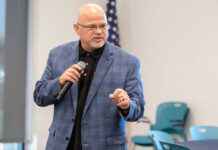By Steve Chestnut, Ed.D.
The Arizona State Legislature is currently considering four bills, SB 1431, SB 1281, HB 2394 and HB 2465, that would dramatically expand Empowerment Scholarship Accounts (ESAs), often referred to as “vouchers.”
ESAs can currently be used to pay tuition and fees at private schools, online learning, tutoring, etc., for students who qualify. Public school districts and charter schools cannot accept ESAs since these schools are free to children in Arizona.
The state began the ESA program in the 2011-12 school year and only 115,000 Special Education students qualified at that time. That year 115 students participated at a cost to the state of $1.4 million. Since then the Legislature has expanded the number of students eligible to use ESAs to 250,000 of the state’s 1 million K-12 students.
This school year, 2016-17, there are 4,102 students participating at a cost to the state of $37 million. Since the first year of this program, the state has spent $99.7 million on ESA scholarships. I believe this proposed legislation concerning the expansion of ESAs raises two important questions.
First, why would the Legislature increase an educational option that costs the state more money than what they currently spend on district and charter schools? One of the arguments in support of ESAs is that they save money since the ESA amount is 90 percent of the state provided per-pupil funding. There would be a savings if ESAs were 90 percent of state “base funding” only. However, the amount of each ESA is 90 percent of state “base funding” plus “district additional assistance.”
The result is that on average every K-8 student that receives an ESA costs the state an additional $1,083 above current funding levels. Every high school student that receives an ESA costs the state an additional $1,286 above high school funding levels.
Feb. 14, the Joint Legislative Budget Committee published a report stating the proposed expansion of ESAs could cost the state $35 million per year by 2020-21. If only half of the state’s 45,000 private school students take advantage of this expanded ESA proposal the cost to the state would be $125 million annually by 2030.
Second, why is the legislature considering an expensive expansion of ESAs when public schools (district and charter schools) are still so poorly funded? The Center for the Future of Arizona recently completed a study of teacher salaries, and the study was verified by the Morrison Institute for Public Policy at Arizona State University. The study showed median pay for Arizona elementary teachers adjusted for the cost of living, ranked 50th in the nation in 2015.
In my judgment the Legislature should not consider an expansion of the ESA program until all public schools in the state are adequately funded.
Steve Chestnut is the superintendent of Maricopa Unified School District.
















![Elena Trails releases home renderings An image of one of 56 elevation renderings submitted to Maricopa's planning department for the Elena Trails subdivison. The developer plans to construct 14 different floor plans, with four elevation styles per plan. [City of Maricopa]](https://www.inmaricopa.com/wp-content/uploads/2024/04/city-041724-elena-trails-rendering-100x70.jpg)